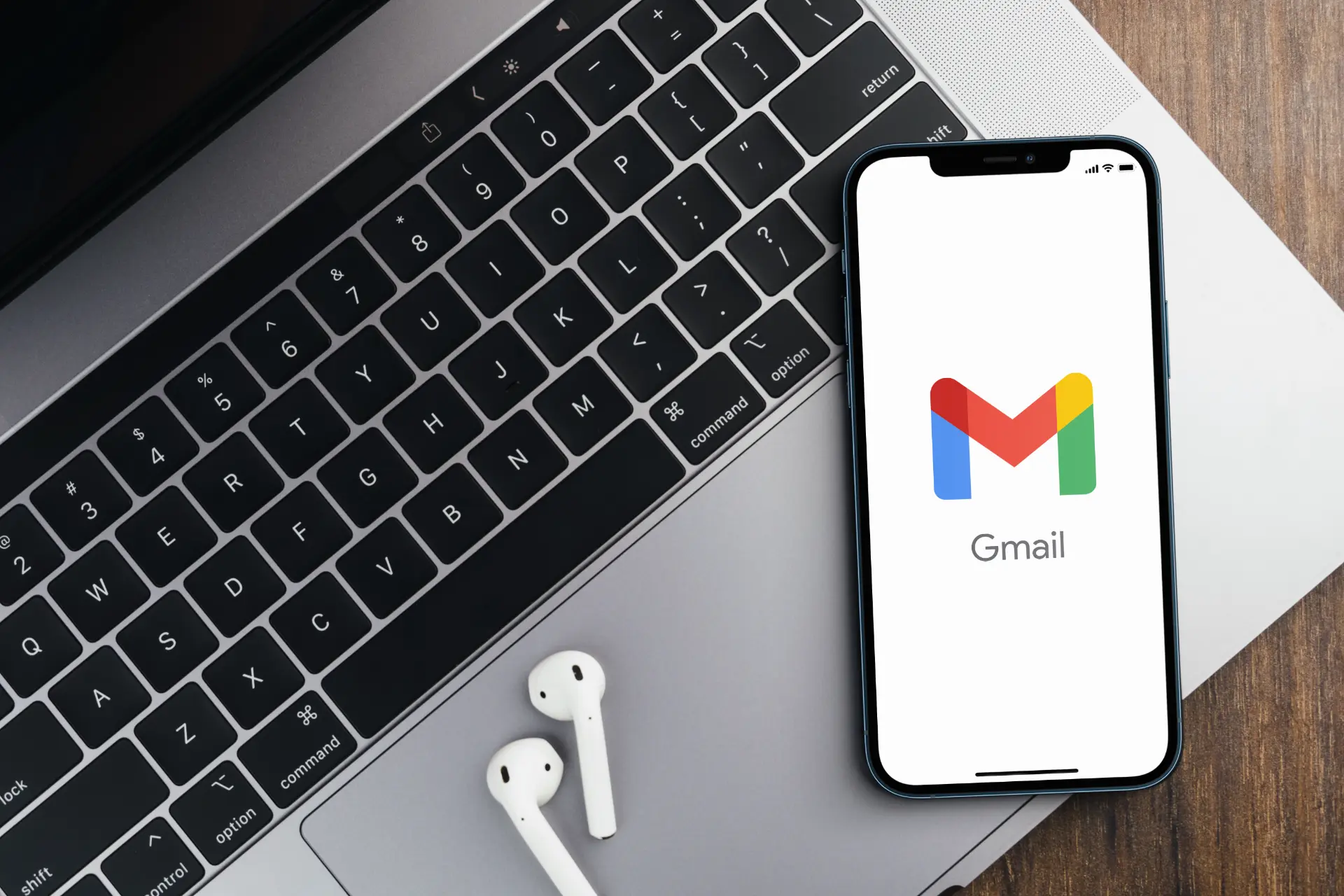Table of contents
- Your Gmail account hacked: what it means and why to act now
- How to check if Gmail is hacked
- Gmail account hacked: what to do to restore security
- Tips to prevent your Gmail account from being hacked
If your Gmail account has been hacked, it means one or more malicious actors have gained unauthorized access to your email address.
Your Gmail account hacked: what it means and why to act now
Hacking Gmail accounts is a daily activity attempted by hacker groups worldwide.
This hacked state represents a serious risk to your online security, as your personal data and information could be exploited for malicious purposes, such as identity theft or scams.
Such breaches can occur in many ways: clicking on suspicious links, using weak or reused passwords, or falling victim to phishing on fraudulent websites.
If you notice suspicious activity in your email account, it’s crucial to act immediately to protect your data.
How to check if Gmail is hacked
Identifying whether your Gmail account is compromised requires a series of checks:
- Suspicious activity
Check the activity log by logging into your account. You can find information about recent logins, including any logins from unusual devices or locations.
- Unexpected emails
If you have received security notifications or emails about password change attempts that you did not request, your Gmail account may have been hacked.
- Credential breach status
Use online tools to verify if your email address has been involved in a data breach.
Gmail account hacked: what to do to restore security
Discovering that your Gmail account has been hacked can be alarming, but acting quickly is essential to limit the damage and restore security. Here’s a step-by-step guide to address the situation and protect your personal information.
1. Change your password immediately
If you still have access to your account, the first step is to create a new password. The password should be:
- Complex
Use a mix of uppercase and lowercase letters, numbers, and symbols
- Unique
Never reuse the same password across other websites
- Long
Aim for at least 12-16 characters to make it harder to crack
If you can’t access your account, use Gmail’s recovery system to reset the password by providing your phone number or recovery email address.
2. Enable two-step verification
Two-step verification, also known as two-factor authentication, is a powerful tool to prevent unauthorized access. Here’s how to enable it:
- Go to your Gmail account security settings
- Select the two-step verification setup option
- Choose an authentication method (e.g., an SMS to your phone number or an authentication app like Google Authenticator)
- Complete the setup to add an extra layer of protection
With two-step verification enabled, anyone trying to access your hacked Gmail account will need an additional code beyond the password, making unauthorized access much more difficult.
3. Check and restore account settings
A hacked Gmail account might have settings altered by hackers to maintain control. Verify and restore the following:
- Username and password
Ensure they haven’t been changed.
- Phone number and recovery email address
Check that they are correct and haven’t been replaced with unfamiliar information.
- Automatic replies
Disable any auto-replies set to mislead your contacts.
- Email filters
Look for suspicious filters redirecting your messages to hidden folders.
4. Analyze connected devices
Go to Gmail’s Security section and review all devices that have accessed your account.
If you see devices you don’t recognize or logins from unusual locations, disconnect them immediately. You can do this by clicking the button to disconnect all devices.
5. Remove access for suspicious websites and apps
Hackers may use applications or connected websites to maintain access to your email account.
Navigate to Gmail’s security settings, check the list of authorized apps and websites, and remove any access that appears suspicious or unfamiliar.
6. Monitor your account for suspicious activities
After restoring security, continue monitoring your account. Look for signs that of a possible compromised status, such as:
- Emails sent without your knowledge
- Changes to security settings
- Notifications about new login attempts or password changes you didn’t request
7. Check personal data and update credentials
If your hacked status has compromised other accounts linked to Gmail, such as social media or banking platforms, immediately change the passwords for these as well. Ensure you use unique credentials for each service.
8. Contact Gmail support if necessary
If the problem persists or you’re unable to regain control of your hacked Gmail account, contact Google support. Provide all necessary information, such as your email address, phone number, and details about suspicious activities you’ve noticed.

Tips to prevent your Gmail account from being hacked
Prevention is key to keeping your Gmail account secure:
- Use a unique and difficult-to-guess password
- Always enable two-step verification
- Avoid clicking on suspicious links or entering credentials on unverified websites
- Keep your security information, such as your phone number and recovery email address, up to date
Questions and answers
- How can I check if my Gmail account has been hacked?
Check recent account activity and look for logins from unknown devices. - What should I do if my Gmail account has been hacked?
Immediately change your password, enable two-step verification, and review any changes to your security settings. - How do I activate two-factor authentication?
Go to Gmail’s security settings and follow the instructions to set up verification via SMS or app. - How can I know if my email address has been compromised?
Use online tools to check if your email address has appeared in data breaches. - What are the signs of a hacked account?
Suspicious activity, unsolicited notification emails, or changes to your account without your consent. - Can I recover a hacked Gmail account?
Yes, by following Gmail’s account recovery steps and updating all security settings. - Why should I enable two-step verification?
It adds an extra layer of security, reducing the likelihood of unauthorized access. - What happens to my personal data if my account is hacked?
It may be used for identity theft or scams. Protecting your data is essential. - What should I do if I can’t access my account anymore?
Use Gmail’s recovery system, answering security questions and providing your phone number or recovery email. - How can I prevent my account from being hacked again?
Use secure passwords, avoid suspicious links, and always enable two-factor authentication.
